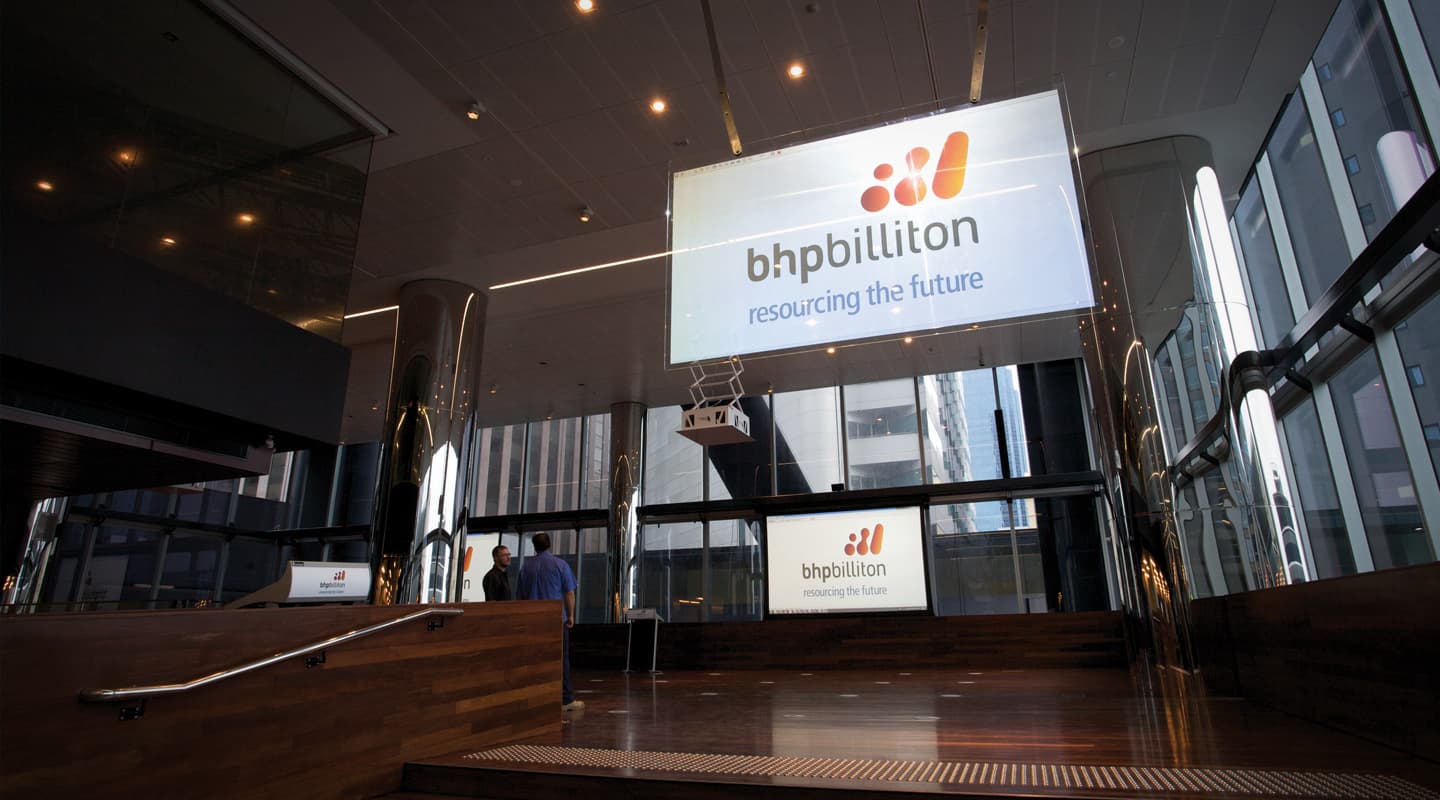
A Skyscraper Showpiece In The West
AV integrator Vizcom tapped a fertile vein of success in Perth’s landmark new highrise tower.
Text:/ Derek Powell
David Jones from Western Australian integrator Vizcom Technologies has quite a story to tell about a large-scale project for BHP Billiton. But he has some firm ideas about telling this tale.
“I’m never a fan of articles that are written when everything’s shiny and new,” he told AV. “This project’s a year old and we purposely waited until it was well and truly bedded down before we even started speaking about it.”
The project is a fitout of 35 floors of the 45-storey Brookfield Place skyscraper in the heart of Perth for the major tenant BHP Billiton in WA. You would expect a 35-storey job to be big, and this one certainly is enormous. There are more than 200 audiovisual-equipped rooms and, according to Crestron Australia, it is the largest implementation of Crestron Digital Media anywhere in the Southern Hemisphere.
Size certainly does matter but more importantly, Vizcom has re-invented its role as an integrator by adding value in areas you might not expect.
The project was designed and well-documented by consultants Norman Disney Young before being put out for tender on a tight schedule for delivery over a nine-month timeframe. Vizcom won the bid and Jones, along with Vizcom project manager Bruce Gillon, started work with the clients to understand their requirements and develop some standard room plans for the 200-plus spaces in the fitout.
DRILLING DOWN
The project was built around Crestron Digital media products. Typically there is a central rack room on each floor with signals to and from each room distributed by a fibre optic matrix. “The whole video infrastructure is based on fibre,” Jones explained. “There’s really only a couple of cable types – either fibre or Cat6 – plus occasionally a bit of speaker cable.” In each room, tabletop-mounted Shure Microflex multi-element boundary microphones were converted to Cobranet by interfaces under the tables before being sent across a dedicated audio subnet to the Audiaflex digital signal processors in the rack rooms. With raised computer flooring throughout the project, access to table boxes and wall-mounted equipment was greatly simplified. Vizcom partnered with electrical contractors Everett Smith which ran all the cables, and Jones reported a great team spirit amongst the building, electrical and data teams on the construction.
“We had regular meetings multiple times a week,” he said. “There was no one banging the desk at each other when there were problems. Everyone worked together, which was something I’ve never seen before on a project of this scale. I still believe that’s why we had such an excellent result and a project that was delivered on time – despite growing considerably.”
Each of the meeting and training rooms was fitted into one of a series of templates with screen sizes based around InfoComm standards for viewing distances. Each room is controlled by touchpanel – ranging from a 150mm wall panel in four- to six-person rooms, to larger screens in videoconference spaces and the medium and large training rooms. Notably, every room also features a 150mm external touchscreen, which runs the real-time room booking system. The booking panel displays the meetings for each day and can be used to reserve the spaces on the spot. This information is also available on the panel inside the room, which provides the ability to view upcoming bookings and extend meetings if needed.
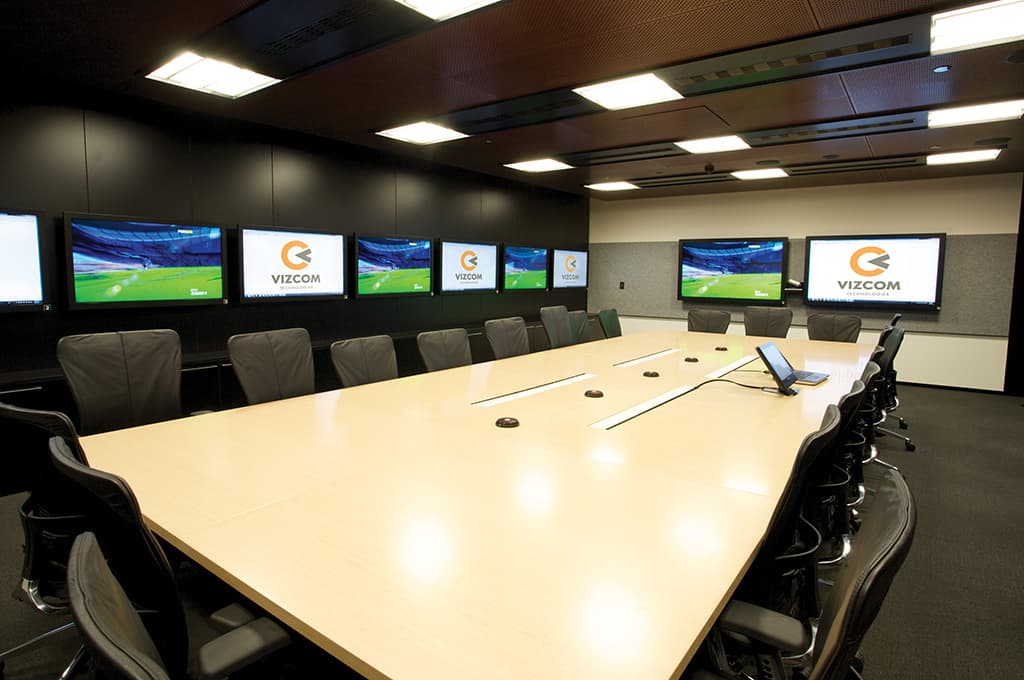
DIY SOFTWARE
While room booking integrated with a client’s own Exchange servers is becoming more common, the scale of BHP Billiton’s implementation created some issues of its own. Their Exchange servers are not on-site and Vizcom programmers needed to integrate third party software to cope with the latency inherent in the system. This was to be just the first of many crucial software challenges. “We don’t like to think of ourselves as a software company so much, but we like to think that we are able to write the glue in between the bits that don’t work too well,” Jones said.
Although there are no electronic whiteboards (a design decision made early in the project), in the tender every meeting room LCD was specified with a touch overlay, allowing them to be used as whiteboards with suitable software. Vizcom facilitated a series of workshops with BHP Billiton personnel to find the right software.
“We demonstrated every known piece of touchscreen software on the market,” Jones recalled. “All were too complex, too many buttons, too many features and they weren’t getting to what they really wanted, which was just to replace an electronic whiteboard.”
So Vizcom software developers were contracted to create a custom application for the project, which was dubbed ‘Vizboard’. It was a perfect fit.
“Vizboard will allow you to draw over websites and PDFs, save out to a network share and keeps things really simple. The application has now been wrapped into BHP Billiton’s SOE and it’s on all company laptops. So everyone that walks into the building has software that’s ready to go and works on any LCD screen in the building,” he explained.
The lower four floors are known as Infrastructure Zone A and are filled with spaces used for meetings with external clients and contractors. “It’s pretty intense,” Jones said. “Each of these floors has four individual racks, each with a 32×32 fibre matrix. It makes for a helluva lot of inputs and outputs on one floor!”
The ground floor also has a showcase presentation space used for a range of functions. Twin 10,000-lumen projectors light up 180-inch (4.5m) screens flanking the main area, while a 120-inch (3m) HoloPro glass screen is suspended above the floor in an atrium. These are complemented by a series of wall-mounted LCDs running a Spinetix digital signage system.
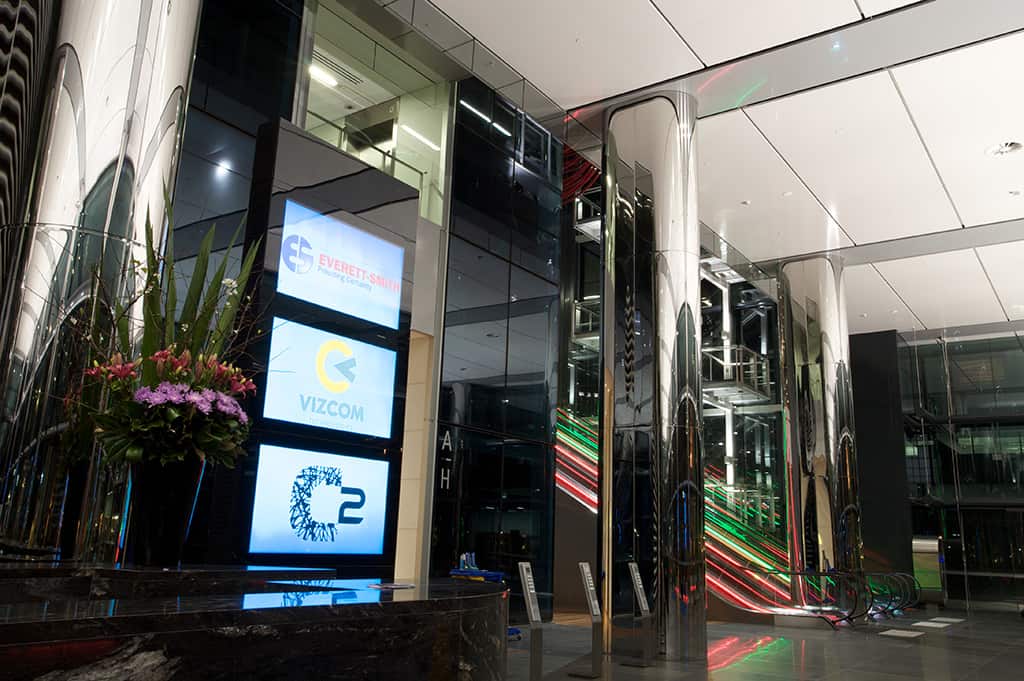
WAYFINDING
Standing out in the foyer are the super elegant Holo terminals, curved glass touchscreens that act as wayfinding kiosks. It was yet another system that Vizcom software wizards were called on to integrate with the room booking screens.
If you’re counting, you’ll see that so far Vizcom developed or integrated four separate software systems: room booking, whiteboarding, wayfinding, and signage. To boot, they had to wrangle four separate IP subnets (VC, audio, control and VOIP) plus Dynalite and BIM (building information management) integration. All this and we haven’t even mentioned IP TV and the extensive Crestron Fusion monitoring, which provides oversight of all the AV equipment.
I suggested Vizcom’s abilities with software development were setting the company apart from firms still relying on traditional installation and integration skills. “We like to think it has been something that’s driven our business forward,” Jones agreed modestly, “…having the ability to do something other than just respond to a tender spreadsheet”.
There’s plenty more to the job we haven’t the space to cover in detail such as the Samsung videowall displays in the 24/7 remote operations centres, dedicated high-bandwidth videoconference spaces and the emergency response rooms.
So after a year of operation, Vizcom can now look back in satisfaction at a job that is, as Jones noted at the start “well and truly bedded down”. Once again, it’s Vizcom’s hard work on the software that gives him the confidence to pronounce the project a success, having implemented Crestron’s Fusion to monitor and report on every system.
“Fusion has proved to be very valuable,” Jones commented. “Every day we are pulling metrics out of it that are amazing. There’s hardly a time when every room isn’t being used.”
And that, ladies and gentlemen, has got to be the one metric that counts.
MORE INFORMATION
Audio Products Group (Biamp): www.audioproducts.com.au
Crestron: www.crestron.com.au
Holopro: www.holopro.com
Jands (Shure): www.jands.com.au
Madison Technologies (SpinetiX): www.madisontech.com.au
Samsung: www.samsunglfd.com
EQUIPMENT LIST HIGHLIGHTS
Touch panels: 400+ Crestron (6-inch/9-inch/15-inch)
Matrix switchers: 50+ fully- populated Crestron Digital Media (DM) frames (32×32/16×16)
Fibre Tx/Rx: 800+ Crestron DM fibre transmitters & receivers
V/C codecs: 40+ Cisco C40 video conference systems
Projection: 70+ Sony projectors (various models)
LCD panels: 300+ Sony LED LCD displays (various sizes; 250+ fitted with touch overlays)
Audio
DSP: 50 Biamp Audiaflex frames (over 450 AEC channels)
Desk mics: Shure Microflex
Ceiling speakers: 600+ Tannoy CMS Series

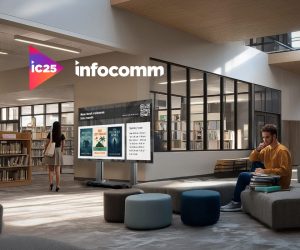
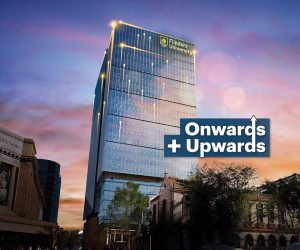
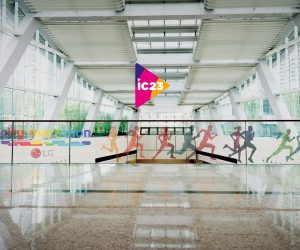
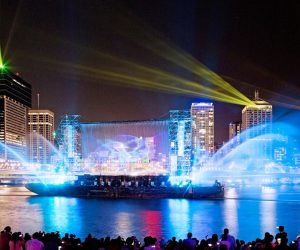
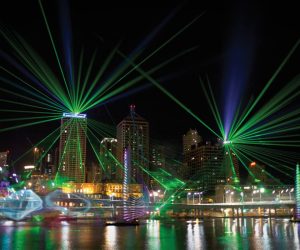
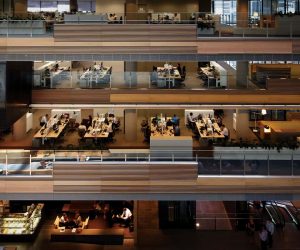
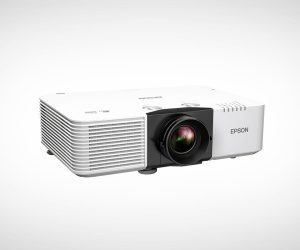
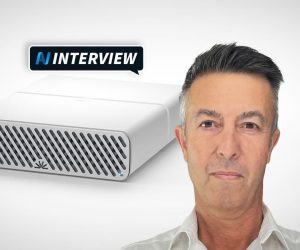

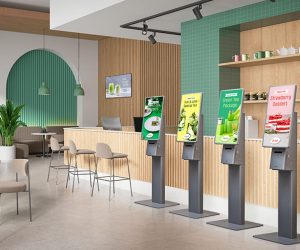
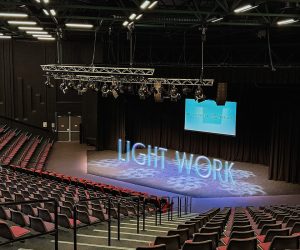
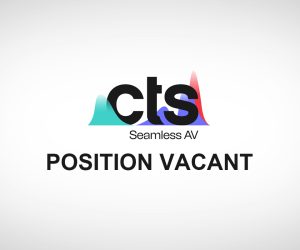


RESPONSES